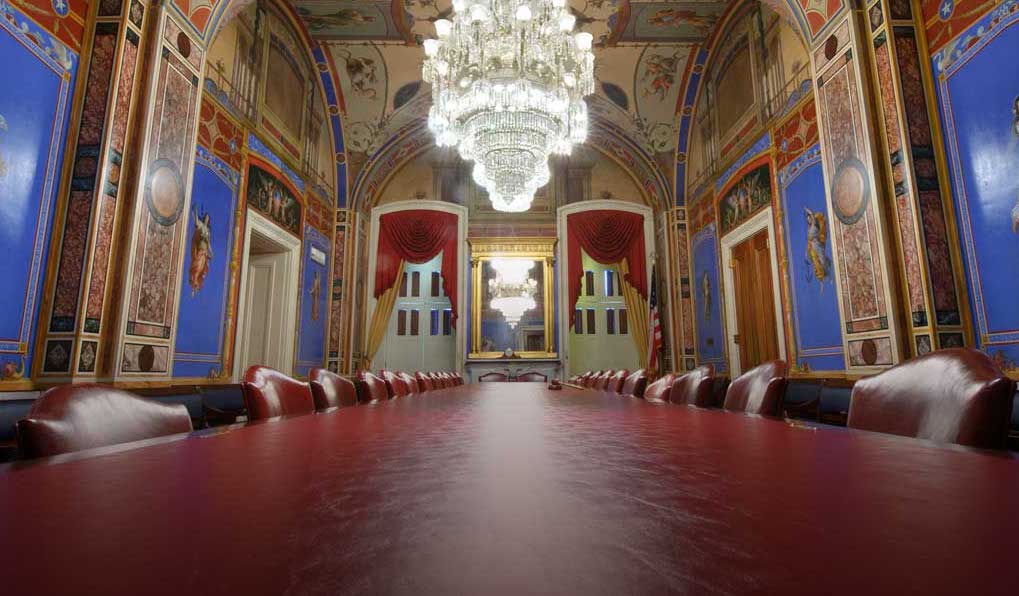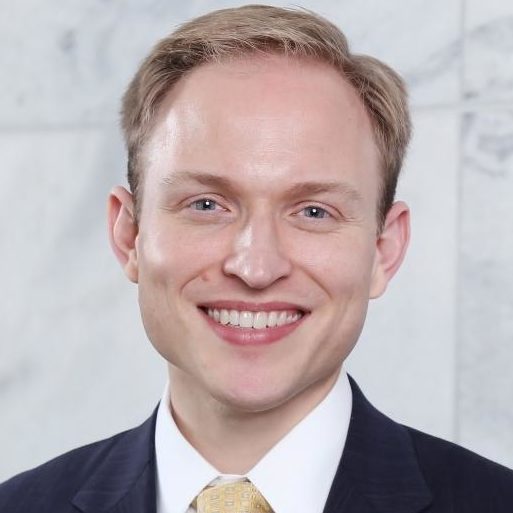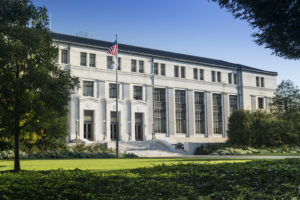
Legal scholar argues that the oft-criticized formal rulemaking process has virtues in proper settings.
Formal, on-the-record rulemaking is the platypus of administrative law. Unlike the common notice-and-comment rulemaking process, formal rulemaking involves adjudicatory-like hearings with an administrative law judge, testimony, cross-examination, and an exclusive record. Formal rulemaking prioritizes participation by affected parties, reasoned decision-making with a closed record, and transparency over notice-and-comment rulemaking’s preference for increased agency flexibility. Scholars, policy makers, and other interested parties have advocated for killing this gawky beast. Indeed, in the 1970s, the U.S. Supreme Court, in United States v. Allegheny-Ludlum Steel and United States v. Florida East Coast Railway, strapped formal rulemaking to the gurney. But formal rulemaking still has its uses, and it should be considered on its merits in particular regulatory situations.
The recently proposed Regulatory Accountability Act (RAA) has brought attention to formal rulemaking, as the bill would impose on agencies a “public hearing” requirement that is a close relative of formal rulemaking. Among other things, the Act would require that agencies provide a public hearing in certain circumstances for “major” or “high-impact” rules—those with an economic “effect” over certain dollar thresholds.
Some observers, including scholars affiliated with the Center for Progressive Reform, have criticized the RAA’s public-hearing provision as giving regulated parties an unfair advantage over the public and beneficiaries. Only regulated firms, these observers argue, will have access to lawyers to participate in these “impracticable, wasteful, [and] burdensome” hearings.
But neither formal rulemaking nor its close relative in the RAA should be dismissed as burdensome or anti-regulatory in all cases. Under select circumstances, perhaps such as those in the RAA, formal procedures, with their focus on participation, careful decision-making, and transparency, can ensure that agencies are using their powers appropriately—advancing both conservative and progressive ends.
Despite my concerns over a few of the RAA’s provisions—and the bill’s failure to go further in cleaning up the Administrative Procedure Act (APA)—I am much less skeptical of the RAA’s public-hearing provisions for five reasons.
First, formal rulemaking’s detractors, as Aaron Nielson has chronicled, have framed that procedure’s problems in ways that are more mythical than real. Yes, delays and other problems arose in some high-profile rules (including the Food and Drug Administration’s (FDA) infamous peanut-butter rule), but even those problems were not as significant or inevitable as they have been remembered. Other agencies, such as the U.S. Department of Agriculture and numerous state agencies, have successfully used formal rulemaking by implementing appropriate agency procedures and remaining focused on their regulatory goals.
To be sure, scholars deem the Federal Trade Commission’s (FTC) Magnuson-Moss hybrid rulemaking proceedings, which are similar to the RAA’s public hearings, for trade-specific regulations a failure. Many of the FTC’s rules adopted under this process took more than two years to promulgate or were never finalized. But instead of casting all of the blame on the inherent nature of hybrid or formal rulemaking, critics should consider why these proceedings failed in most cases. After all, even the FTC used hybrid rulemaking successfully in some cases. The FTC, like the FDA in the peanut-butter rule, may simply have given some of the rules low priority. And it is far from clear that hybrid rulemaking was appropriate because those rules were not necessarily highly significant or even especially fact-laden, where adjudicatory-like procedures would be useful. Instead, the additional procedure may have simply allowed affected industries more time to pressure agency members—perhaps through congressional allies—into slowing down, watering down, or forgoing rulemaking.
Second, although the Supreme Court may have effectively banished formal rulemaking, it did so only in strikingly unpersuasive decisions (Allegheny-Ludlum and Florida East Coast Railway), as Gary Lawson has ably described. My recent perusal of the Justices’ archives indicates that the Court did not fully understand the implications or long history of formal rulemaking. In what the Court viewed as boring ratemaking cases that it was forced to hear under its mandatory jurisdiction, the Court allowed formal rulemaking—sua sponte—to fall into desuetude as a way to get around certain APA requirements.
Third, formal rulemaking is not necessarily industry-friendly. Indeed, Congress, in the 2010 Dodd-Frank Act, called for formal rulemaking to further progressive ideological ends by permitting the Office of Comptroller of the Currency (OCC) to preempt certain state laws only after on-the-record adjudication or rulemaking. Legislative history indicated that prior to Dodd-Frank, the OCC had eagerly preempted state law as a way of attracting fee-paying financial institutions to select it as their prudential regulator. Formal proceedings, by requiring agencies to build a record and rely exclusively upon it, can serve as a tool for ensuring that agencies use their expertise and forgo actions that simply benefit regulated parties or the agency itself. Formal rulemaking, in other words, can be a device for limiting, as opposed to furthering, regulatory capture.
Moreover, the RAA’s public-hearing requirements apply to the promulgation and repeal of major and high-impact rules. Although an earlier version of the bill only included the costs of regulation in setting thresholds for major or high-impact rules, the broader language in the current bill refers to “effects,” which include costs and savings. Thus, formal rulemaking and similar public hearings can help protect the public from unwarranted regulatory and deregulatory impulses.
Fourth, although I share concerns over ensuring that the formal rulemaking process is fair and open to all parties—and not a vehicle for regulatory capture—I am not sure how meaningful the problem is here. Ordinarily, I would expect public-interest groups to have lawyers at the ready, as they do in environmental and consumer matters, to represent less engaged or less well-funded parties. Likewise, if the agency is attempting to promulgate—as opposed to repeal—regulations, I would expect that the agency’s interest is generally aligned with the public’s, not with that of the regulated parties seeking the hearing.
Finally, although a full consideration of when formal rulemaking can be helpful might take much more space than this essay can provide, as a preliminary matter it would seem that formal rulemaking would make the most sense when some combination of the following circumstances exists: where facts, instead of discretionary decisions, are determinative; where the rules at issue are significant and will receive priority from the agency; where particular parties are especially affected, such as in ratemakings; and where regulatory capture is likely. The key point is that these circumstances dovetail with some of the same considerations called for by the RAA in deciding when to hold a public hearing. Instead of questioning formal rulemaking’s very existence, scholars and policymakers should recognize that formal rulemaking still can be useful, even if its domain is limited.
Despite its unconventional appearance, formal rulemaking remains one of administrative law’s four key forms of agency action—along with formal and informal adjudication and informal rulemaking. It may still have some appropriate uses, even if those are relatively rare. As more scholars, policymakers, and interested parties grapple with formal rulemaking’s domain, we might collectively determine that public hearings do not make sense even under the conditions that the RAA would demand. But we should evaluate formal rulemaking on its merits in each situation—and not succumb to its myths.
This essay is part of a series, entitled Assessing the Regulatory Accountability Act.
The photograph above is of a room in the U.S. Senate building.




